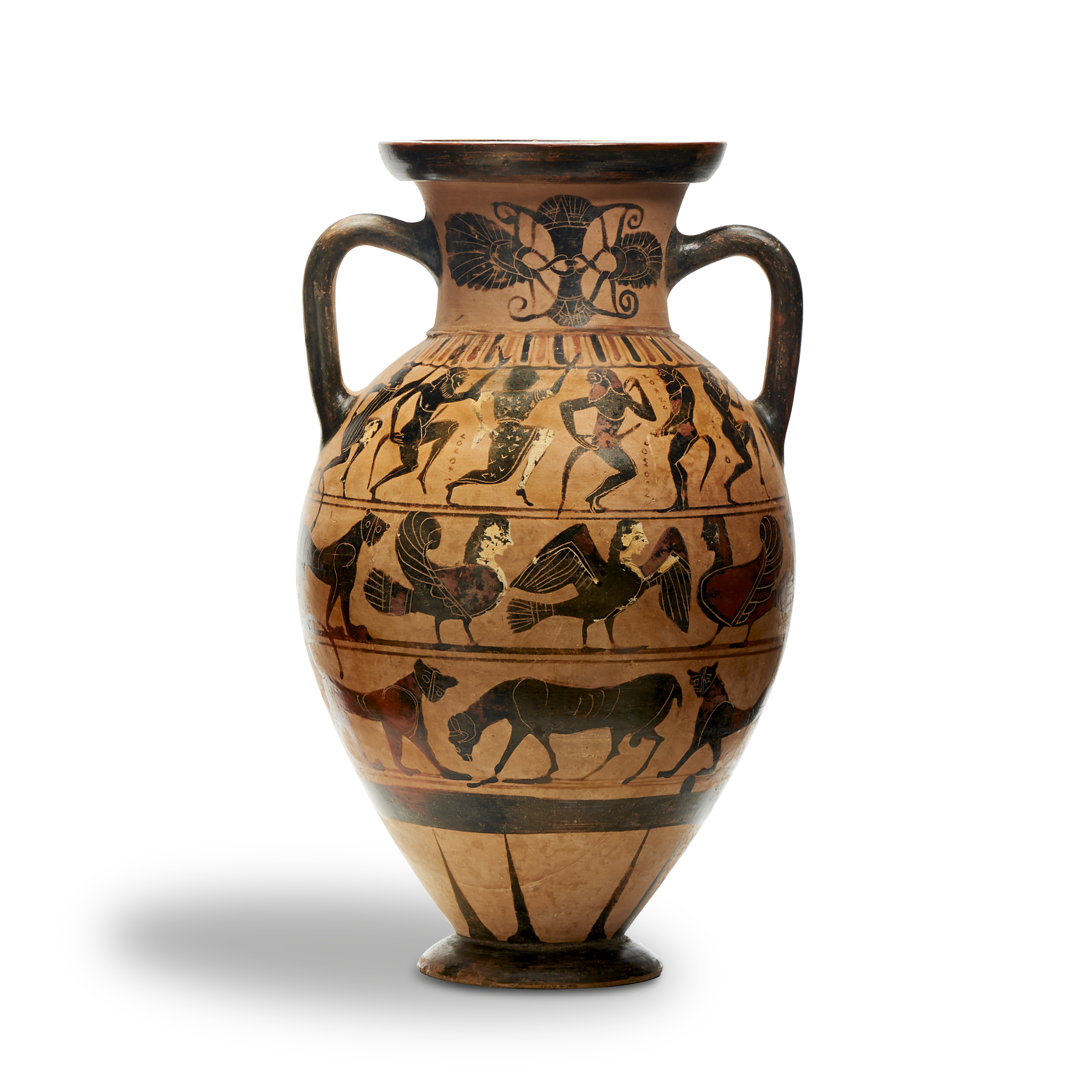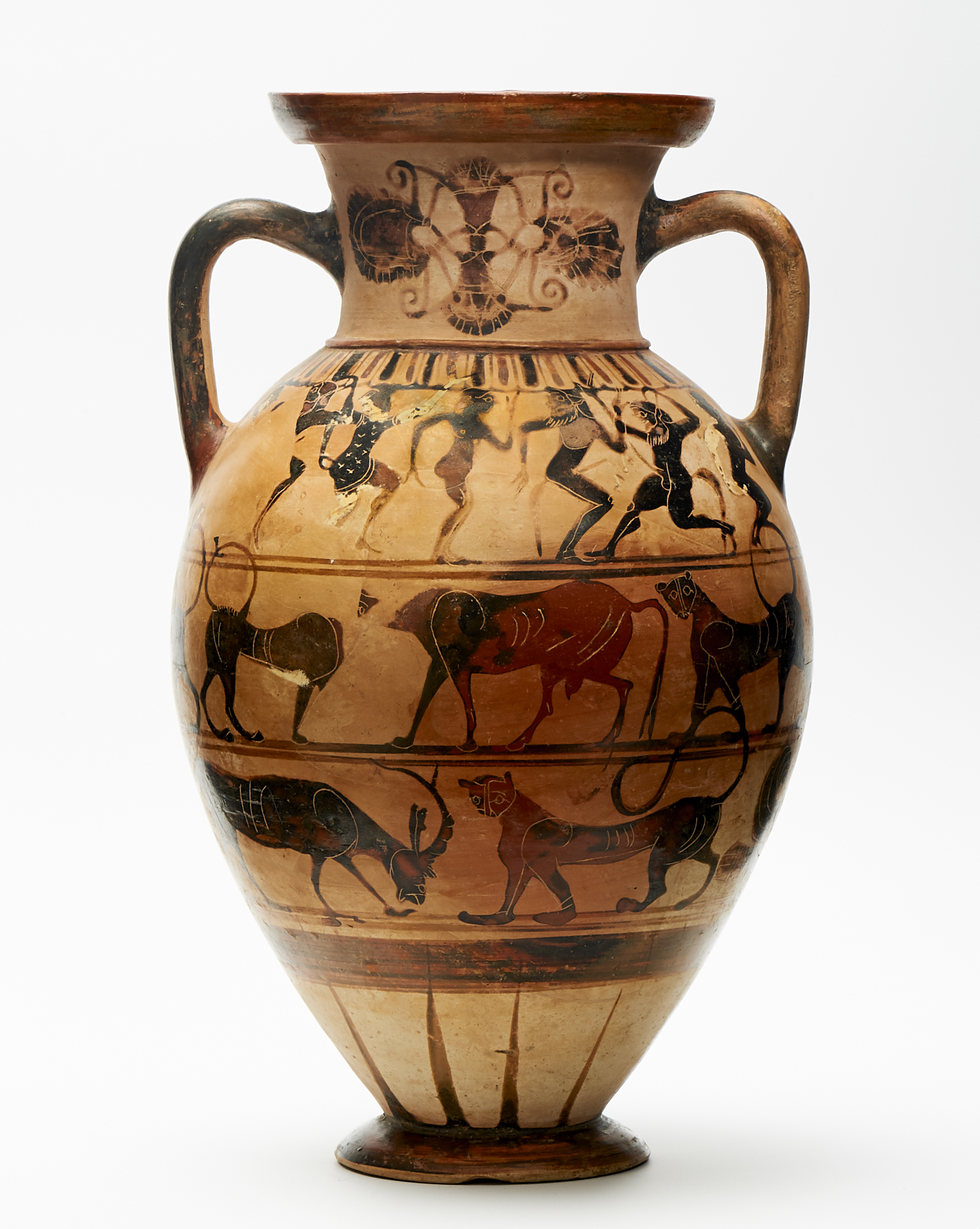The body decorated over three registers, the upper register of one side with five gesticulating komasts, all nude, a woman to the left, wearing a chiton, pseudo-inscriptions in the field; the middle register with two sirens to the right, framed by a panther to the right and a siren to the left; the lower register with a ram, its heads lowered, between two panthers; the upper register of the other side with similar scene, pseudo-inscriptions in the field; the middle register with a bull to the left, framed by two confronting panthers; the lower register with a goat with lowered head and a panthers; with alternating red and black tongues on the shoulders, a lotus and palmette cross on the neck, rays above the foot, details in added red and white.
39.5 cm high
Note
Usually the shoulder frieze of Tyrrhenian amphorae show mythological scenes. The shoulder of this piece depicts an erotic scene which belongs to the first erotic motifs in Attica.
Vases of the Tyrrhenian Group were made in Athens explicitly for the Italian export market, especially for customers in the Etruscan cities of Caere and Vulci (“Tyrrhenian” is derived from the Greek word for the Etruscans, “Tyrsenoi”). As Boardman informs (pp. 36-37 in Athenian Black-Figure Vases), the decorative scheme generally resembles that of Corinthian vases, and the scenes emphasize Herakles and the Amazonomachy, some komasts and their successors (as here), as well as an interest in everyday life. The amphora necks typically carry a lotus and palmette cross or interlace.
Much is known about the daily life of the Etruscans thanks to depictions on tomb paintings, scenes on vases, and the surviving literary accounts of ancient writers. The 4th century B.C. Greek historian Theopompus, cited by the Roman author Athenaeus many centuries later, informs that the Etruscans were extraordinarily pleasure-loving. "When they come together in parties and with relations, this is what the do: first, when they stop drinking and are ready to go to bed, the servants bring in to them - with the lights left on!- either hetairai, party girls, or very beautiful boys, or even their wives.
When they have enjoyed these, they then bring in young boys in bloom, who in turn consort with them themselves...and indeed they like to keep company with women: but they enjoy the company of boys and young men even more" (see p. 235 in L. Bonfante, Etruscan Life and Afterlife).
Scenes of aroused komasts or satyrs abound on vases by the Paris Painter and his followers. See for example the komasts on an amphora in Orvieto, a satyr pleasuring himself on an amphora in Tarquinia, and four aroused satyrs on an amphora in Würzburg, pls. 7c, 9, and 17 in L. Hannestad, The Paris Painter, An Etruscan Vase-Painter. For related erotic scenes see also the Tomb of the Bulls, pl. VIII-3 in Bonfante, op.cit.








